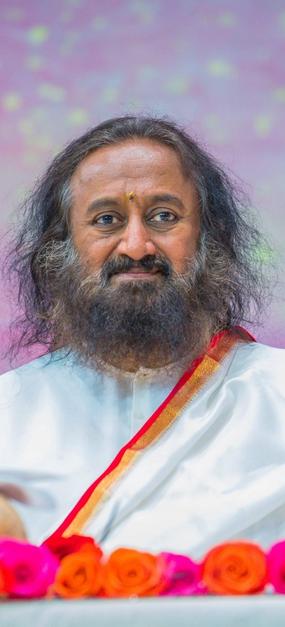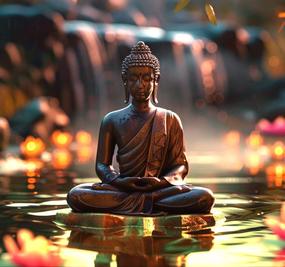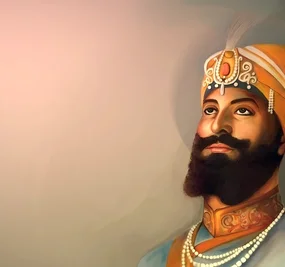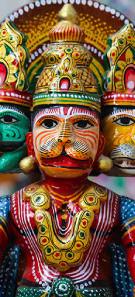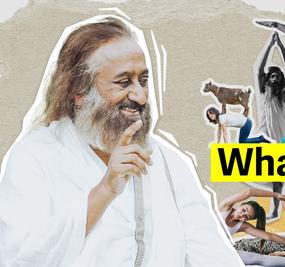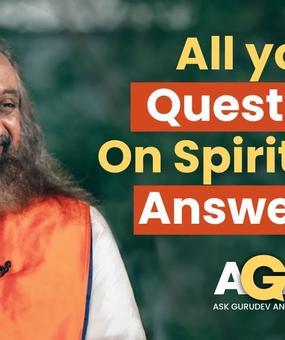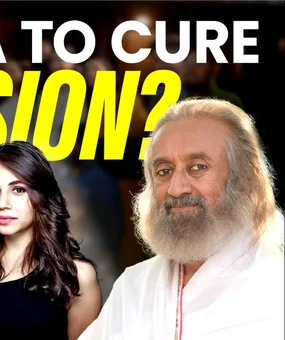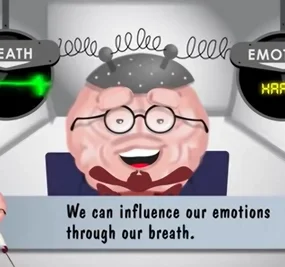Guru Parampara refers to the lineage of Gurus that has allowed the transfer of knowledge across generations for the benefit of society. It is the tradition of passing knowledge from the master to the disciple. A practice that has preserved the knowledge reserve of major schools of knowledge in the Indian subcontinent.
Significance of Guru Parampara
The Guru-Shishya (Master-Disciple) tradition has ensured that every generation has access to knowledge that has the power to heal mental anguish, a suffering that no generation has been a stranger to.
Every Guru from a lineage (parampara) has made the eternal knowledge relevant to the generation of their times. Every Guru Parampara has made immense contributions to the world. Great scriptures have come out of them, and the Gurus in every tradition have had impressive personas and traits. Remembering them enlivens their qualities in us, even if for a brief time.
The Advaita Guru Parampara
Advaita philosophy says that everything and everyone in the universe is one consciousness. Gurudev Sri Sri Ravi Shankar explains, “Advaita philosophy is like quantum physics which elucidates that everything is just a wave function. In Chemistry, there are many elements and isotopes. But for a quantum physicist, a periodic table does not exist. Everything is just atoms.”
The Advaita Guru Parampara is the lineage of the Gurus of the sacred philosophy of Advaita. Famous Gurus like Adi Shankaracharya, Ved Vyasa, and Maharishi Vashishtha belong to this lineage of Gurus. Their contributions have kept the knowledge of Advaita alive through the ages. The lineage has allowed the transfer of the knowledge of scriptures like the Upanishads and Bhagavad Gita, and also other sources of knowledge that bring spiritual experiences.
The fascinating stories of the Advaita Masters
In the beginning, there was only Shiva, the eternal consciousness – the first Guru. Narayana floated in this ocean of consciousness with the support of Adishesha, the symbol of awareness. When Narayana experienced oneness with the consciousness around Him, Lord Brahma, the creative instinct of the Universe was born. Thereafter, Lord Brahma turned into many forms. Shiva, Narayana and Brahma, the subtle energies, govern the working of creation.
A Manas Putra (mind born son) or the individual consciousness was born out of Brahma consciousness. He was Rishi Vasistha, the most enlightened of human beings. Rishi Vasistha guided Shri Ram on how to stay centered and equanimous while performing the duties of the world. The dialogue between Rishi Vasistha and Shri Ram is encapsulated in Yogavasistha, a treatise on the illusionary nature of the world.
The son of Rishi Vasistha is Shakti who was succeeded by Rishi Parashar who had the perfect knowledge of time, astronomy, astrology, medicine, and Vedic rituals. Rishi Parashar married a fisherwoman and had a son with her named Krishna Dvaipayana Vyasa who was to become one of the greatest scholars in the history of the Advaita Guru Parampara.
Rishi Vyasa traversed across the Indian subcontinent to meet Rishis of different regions in order to collate the Vedas. He knew 1180 branches of Vedas and authored the Vedanta Sutras (ie. the summary of the Upanishads), Mahabharata of which Bhagavad Gita is a part, Yogasutras, Vyasabhasya and Srimad Bhagavatam.
Rishi Vyasa was succeeded by his son Suka Deva whose coming about holds an interesting story. Once Lord Shiva was narrating a story to Goddess Parvati who dozed off in the middle of the narration. Meanwhile, a parrot was also listening to the story. Held by the wisdom of the story, he wanted the Lord to continue his narration. So he started imitating the affirmatory sounds of Goddess Parvati. When the Lord finished the story and noticed that Goddess Parvati had fallen asleep, he realized that someone else had been voicing the affirmative sounds to the story.
He saw who it was – the parrot. Furious, he ran after him. The parrot hid inside the kutir of Vyas and his wife. Rishi Vyasa begged Lord Shiva for forgiveness on the behalf of the parrot and gave refuge to it. The parrot’s soul transferred into the womb of the wife of Rishi Vyasa. The soul who later was called Suka Deva refused to be born for the fear of being trapped in this illusion of the world and preferred to grasp knowledge from his father’s discourses while he was in the womb. After 16 years, he was born Suka Deva who later narrated the devotional scripture Srimad Bhagavatam to King Parikshit, the grandson of Arjuna. This sacred text, regarded as the ultimate remedy for Kaliyuga, is a collection of the stories of Lord Vishnu and his avatars, especially Lord Krishna.
Likewise, many Gurus are part of the Advaita Guru Parampara. Despite the fascinating depth of the Advaita philosophy, it started to lose its value and popularity among the masses in the later ages when rituals gained more importance over the core philosophy.
Adi Shankaracharya: The Guru who revived Advaita Philosophy
In 7th century CE, Adi Shankaracharya met his Guru Govind Bhagawad Pada on the banks of river Naramada in modern-day Madhya Pradesh. Guru Govind asked Adi Shankaracharya, ‘Who are you?’ In response, Adi Shankaracharya composed the Nirvana Shatakam whose opening para is as follows.
मनोबुद्ध्यहङ्कार चित्तानि नाहं
न च श्रोत्रजिह्वे न च घ्राणनेत्रे ।
न च व्योम भूमिर्न तेजो न वायुः
चिदानन्दरूपः शिवोऽहम् शिवोऽहम् ॥१॥
manobuddhyahaṅkāra cittāni nāhaṃ
na ca śrotrajihve na ca ghrāṇanetre .
na ca vyoma bhūmirna tejo na vāyuḥ
cidānandarūpaḥ śivo’ham śivo’ham ||1||
Neither am I the mind nor intelligence or ego,
Neither am I the organs of hearing (ears), nor that of tasting (tongue), smelling (nose) or seeing (eyes),
Neither am I the sky, nor the earth, neither the fire nor the air,
I am Shiva, the supreme auspiciousness of the nature of consciousness-bliss.
I am (Shiva) the auspiciousness.
Guru Govind was delighted with his disciple. He initiated him into monkhood. Over a period of time, Guru Govind assigned tasks to Adi Shankaracharya that could help reorganize Sanatan Dharma. Shankaracharya revived the Advaita scriptures that were getting extinct. He brought to the masses the forgotten knowledge of the Upanishads in a simplified manner. He founded the four jyotir mathas established in the north, south, east, and west directions of the Indian subcontinent.
The disciples of Adi Shankaracharya and the later Gurus have helped maintain the knowledge of the Advaita philosophy. Thanks to them, we still have a chance to experience that we are all one.
Based on inputs by Swami Hari Hara



